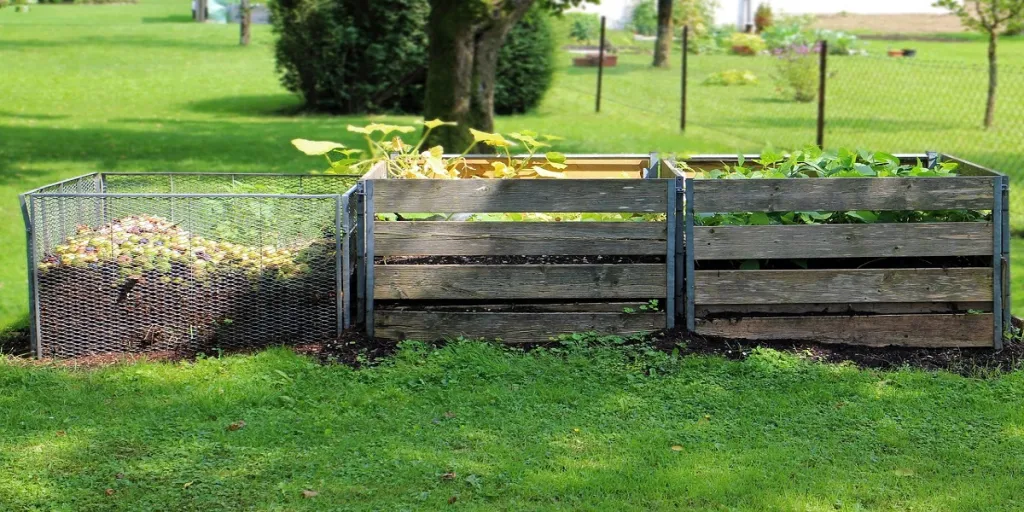The most common composting system is a pile on the ground or a composting heap. But as more individuals embrace eco-conscious living and desire to make their backyard neater, the demand for efficient and effective home composting bins has surged.
However, with so many brands in the market, it’s worth highlighting the key factors that your customers are likely to look for when choosing a machine. This article therefore explores the essential considerations to help businesses and their customers make an informed decision on the best home composting machines for 2024.
Table of Contents
Understanding composting
Global market size for home composting machines
Factors to consider when choosing a home composting machine
Types of home composting machines systems
Choosing your ideal home composting machine
Understanding composting
Compositing is the natural process that harnesses the power of microorganisms to decompose organic waste like food scraps and yard waste into nutrient-rich compost. The compost enriches the soil, thus prompting plant growth.
Compost bins for homes accelerate the decomposition of organic waste, allowing homeowners to improve soil quality faster. The composting process involves mixing brown and green materials with a proper level of moisture and oxygen. The bacteria works perfectly under these conditions, accelerating the decay process.
What are the benefits of composting for soil and plants?
- Compost enriches the soil with essential elements like nitrogen, phosphorus, and potassium for plant growth and high yield. It also improves soil structure, thus enhancing its ability to retain moisture and nutrients.
- Plants grown in compost-enriched soil tend to have stronger root systems and increased resistance to diseases and pests.
- Besides minimizing environmental impact, composting reduces the use of synthetic fertilizers that often affect the soil’s natural nutrients.
- Composting can restore depleted or damaged soil. Soil bacteria love compost manure more than synthetic fertilizers. One can also use where soil erosion or overuse has affected soil quality.
- Composting diverts organic waste from landfills. This reduces methane emissions, thus contributing to a more eco-friendly waste management system.
Global market size for home composting machines
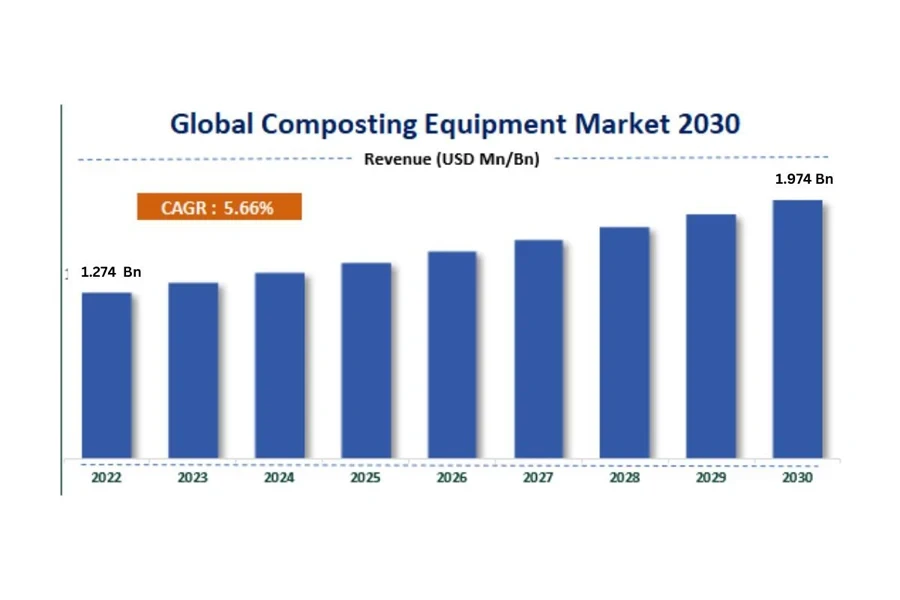
In 2022, the global market size for composting machines was worth US$ 1274.39 million and is estimated to grow at a compound annual growth rate (CAGR) of 5.66% to reach US$ 1974.61 million by 2030.
Several factors fuel this projected rise in demand:
- As environmental concerns escalate, many businesses, individuals, and governments are adopting sustainable waste management practices.
- Organizations like the European Union (EU) have new regulations requiring member states to compost or recycle over 50% of their municipal waste by 2025. This requirement could increase the demand for composting machines in Europe.
- Organic farmers are shifting towards natural and sustainable farming methods to improve soil fertility, biodiversity, and crop production. These farmers invest in modern composting equipment to achieve their goals.
- The surging trend of urban indoor live plants makes homeowners buy composting equipment for decomposing waste and provide manure for their plants.
Factors to consider when choosing a home composting machine

When considering a home composting machine for your store, consider these factors to ensure they meet your customers’ needs and preferences.
Available space and capacity
Customers will likely consider the available space in their kitchen or backyard before purchasing a composting machine. Households with ample space and who generate substantial kitchen waste may choose large home composting machines with a capacity ranging from 5 to 20 gallons (18.9 to 75.7 liters) or even more.
On the other hand, individuals or households with limited backyard space may choose small home composting machines with capacity ranging from 1 to 5 gallons (3.8 to 18.9 liters). And since these machines are compact, they can fit easily on countertops or under sinks.
Ease of use
In this technological world, people want user-friendly equipment that suits their lifestyles. As a retailer, you want to stock composting machines with easy loading and unloading mechanisms.
For instance, the detachable compost bins with hooks and adhesive strips are easy to attach under sinks, cupboards, or kitchen walls for easy loading. The lid opens and closes with a press of the bottom button.
Some composters also have removable inner liners or drawers for easy unloading. These features offer the convenience that most customers love.
Compositing speed
Different machines have varying composting speeds. Some units can produce compost within hours, while others may take weeks or months. For instance, electric waste recycling disposers use aerobic microbes to break down organic waste between 6 to 8 hours. Others have large powerful motors that turn and mix the compost more efficiently, thus promoting faster decomposition.
Other features that accelerate composting speed include temperature control elements and shredders that aid microbes in breaking down organic materials faster. Speed is ideal for customers who want a continuous supply of compost for their gardens or plants. This feature also helps minimize unpleasant odors and discourage pests.
Aesthetic appeal and noise levels
Most people love machines or equipment that blend with their home aesthetics and décor. So, ensure you stock kitchen composting machines that can improve kitchen appearance. Some households also love quiet composting machines.
Budget and cost considerations
Cost is at the center of every purchase decision. Besides the initial cost, customers will also be interested in the price of additional materials or energy requirements.
While people love cheap products, they will likely buy expensive machines with additional features like moisture control systems, Wi-Fi, or programmable settings.
Effort for maintenance
Composting machines require varying maintenance levels. Some, like the tumbler composter, require cleaning after every composting period (6-8 weeks) to prevent mud from building in the compartments.
As life gets busier, buyers want automated machines, such as electronic composters, that can turn and aerate compost without human effort. These machines require little maintenance effort in cleaning, occasional troubleshooting, and adherence to the manufacturer’s guidelines. As a retailer, stock machines that require little maintenance effort.
Types of home composting machines systems
There are four major home composting systems to manage your organic waste better and reduce greenhouse gas footprint. Let’s consider them one by one.
1. Traditional compost bins
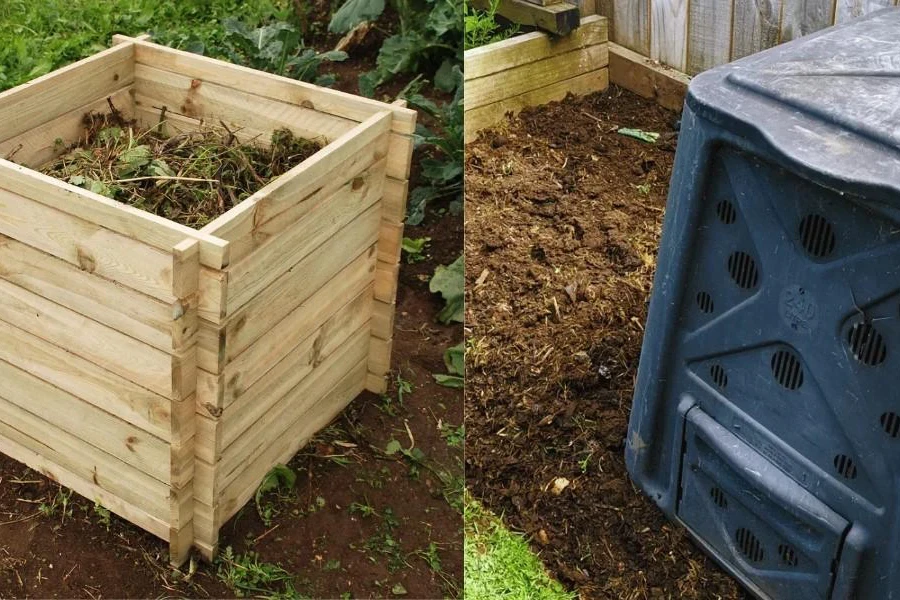
Traditional compost bins are simple, stationary containers made of plastic, wire mesh cages, wood, or waterproof materials with drainage. The bins have waterproof covers to prevent the rain from flogging the compost.
These bins mix organic kitchen waste and garden materials, regularly introducing oxygen in decomposition. One will first fill one-third of the container with garden soil to provide the bacteria and then alternatingly layer the materials they intend to compost.
And since they aren’t powered, one will occasionally turn or mix the compost to aerate it and facilitate decomposition. These composts are ideal for yard clippings, kitchen scraps, and dried leaves.
Pros
- Cost-effective
- Easy to use
- It can handle a decent volume of waste.
Cons
- Take longer to produce compost
- Manual turning is labor-intensive
- It may attract pests and rodents.
2. Tumblers
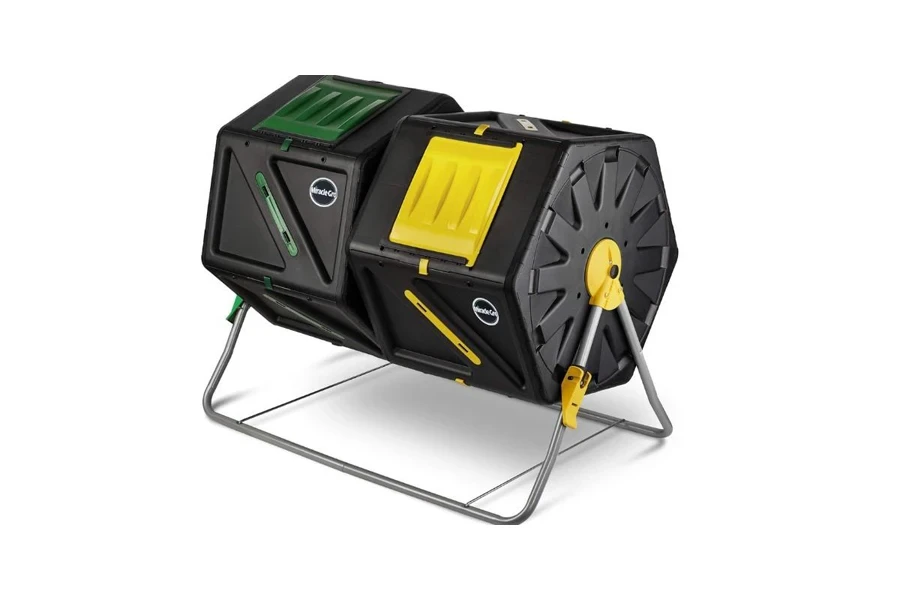
Tumblers are rotating containers designed for faster composting. Since they’re closed, they protect the compost from unpredictable weather and wildlife. They turn the compost, thus eliminating the need for a pitchfork.
Some tumblers, like food cycler waste compost, roll in either direction to speed up decomposition. Alternatively, the self-propelled tumbler can decompose animal manure, sawdust, trough slag cake, or sludge garbage. This tumbler can handle huge compost for farm and retail use.
Pros
- Compost faster than traditional bins
- Convenient for turning the compost
- They keep pests away better than open bins.
Cons
- Some models might have limited capacity
- Smaller tumblers might require more frequent turning.
3. Worm bins (vermicomposting)
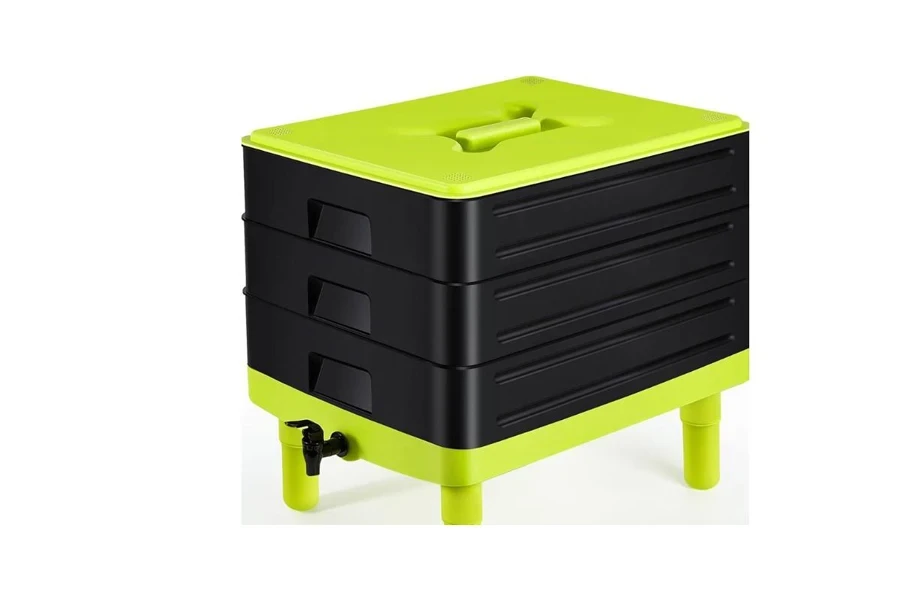
Vermicomposting or worm bin systems are one of the best pieces of soil amendment equipment. This home composting machine uses worms to decompose organic waste into nutrients for plant growth.
One can use a plastic storage bin as a DIY indoor worm bin after drilling holes in the bottom and sides. The holes help with aeration and draining excess water. But if one doesn’t want the DIY hustle, they can purchase the 5-tray worm composting bin.
Once they’ve placed bedding (soil) at the bottom of the bin, they add the red worms to help with decomposition. The worms consume the waste and produce nutrient-rich castings that one can use to improve backyard soil quality.
Pros
- It produces high-quality compost in a small space
- It’s ideal for smaller gardens and apartment dwellers
- The compost is odor-free.
Cons
- It requires specific conditions for the worms
- Not all organic waste is suitable for vermicomposting
- The system needs periodic monitoring to ensure the worms are healthy and active.
4. Electric composters
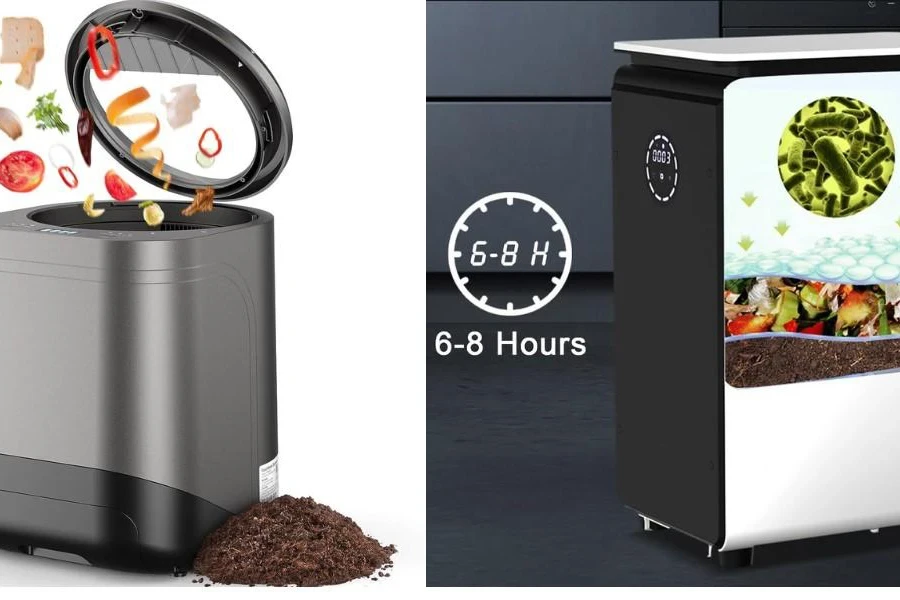
While composting kitchen waste is a noble idea, people living in apartments may not have ample space for a compost pile or a traditional compost. And here is where electric composters save the day.
These food recyclers decompose kitchen waste into a soil-like substance that one can use in their garden and flower beds. Interestingly, they can compost waste within a few hours.
Unlike regular composting systems, electric composters control their odors and methane emissions. However, their performance varies significantly since they are relatively new in the composting industry. Only a few brands can produce nutrient-rich soil amendments.
They use heat, mixing mechanisms, and sometimes enzymes or bacteria to expedite the decomposition of organic waste.
Pros
- They produce compost quickly with minimal effort from the user
- They control odor and can be ideal for indoor use.
Cons
- They’re more expensive upfront (purchase and maintenance cost)
- Some models have limited capacity and may not accommodate larger volumes.
Choosing your ideal home composting machine
Choosing the best home composting machine for backyard gardening requires careful consideration of a range of different factors. People choose uniquely depending on their needs and preferences.
They’ll weigh available space, volume, aesthetic appeal, and budget factors. Customers will also need to understand the advantages and disadvantages of home composting systems before settling for the right one.
If you’re looking for home composting machines at a reasonable price to fulfill your customer demands, check out the Alibab.com showroom.
